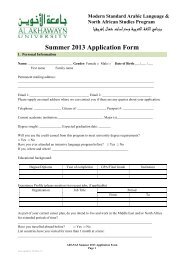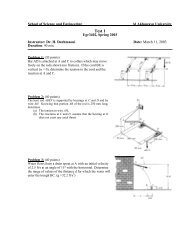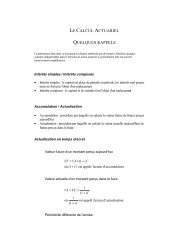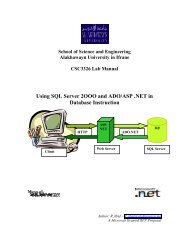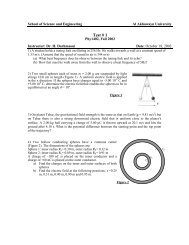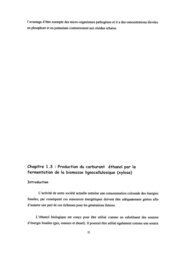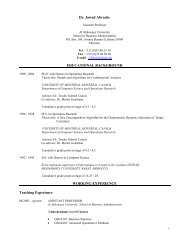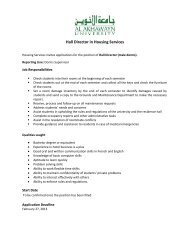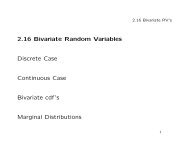Leadership and Values in Language Education - Al Akhawayn ...
Leadership and Values in Language Education - Al Akhawayn ...
Leadership and Values in Language Education - Al Akhawayn ...
- No tags were found...
Create successful ePaper yourself
Turn your PDF publications into a flip-book with our unique Google optimized e-Paper software.
118Proceed<strong>in</strong>gs of the 27 th MATE Annual ConferenceAs previously discussed, shared leadership education suggests a view ofcommunication as an <strong>in</strong>tegrated, complex, <strong>and</strong> rich two-way process, shaped by avariety of variables, namely the participants’ expectations <strong>and</strong> perceptions, whichare, <strong>in</strong> turn, shaped by their socio-cultural <strong>and</strong> functional backgrounds, or are theresult of the immediate contest of communication <strong>in</strong>clud<strong>in</strong>g the sett<strong>in</strong>g <strong>and</strong> thenature of <strong>in</strong>teraction itself. Therefore, shared leadership practice depends not onlyon global leadership competencies, emphasiz<strong>in</strong>g the knowledge <strong>and</strong> abilities toh<strong>and</strong>le cross-cultural <strong>and</strong> <strong>in</strong>terpersonal communication with people from diversesocio-cultural <strong>and</strong> functional backgrounds, but also the competencies <strong>and</strong> skills tocope with the dem<strong>and</strong>s of <strong>in</strong>teraction result<strong>in</strong>g from the emerg<strong>in</strong>g complexities ofthe immediate situation <strong>in</strong>clud<strong>in</strong>g those that may result from the <strong>in</strong>teraction itself<strong>and</strong> its different stages. Consequently, emphasis has been placed on theknowledge <strong>and</strong> competencies needed to h<strong>and</strong>le cross-cultural <strong>and</strong> crossfunctionalcommunication, as well as small-group <strong>and</strong> team-work <strong>in</strong>teractionalskills necessary for effective shared leadership practice. This would apply tosecond <strong>and</strong> foreign language communication, which is consequently shaped byteachers’ <strong>and</strong> students’ perceptions <strong>and</strong> expectation <strong>and</strong> the classroomenvironment, as well as the nature of communication, participation, power <strong>and</strong>social organization patterns established <strong>and</strong> the activities designed <strong>in</strong> a specificclassroom. These variables, among many others, are usually referred to as thedynamics of classroom communication, which is the variety of forces that maycome <strong>in</strong>to play to shape the nature of classroom <strong>in</strong>teraction, <strong>in</strong>clud<strong>in</strong>g whatKaren; E. Johnson (1995) refers to as classroom communicative competence, <strong>and</strong>which she considers as a prerequisite for students’ successful <strong>and</strong> effectiveparticipation <strong>in</strong> classroom <strong>in</strong>teractive communication <strong>and</strong> events.Classroom communicative competence is then considered as another contribut<strong>in</strong>gfactor to the dynamics of classroom communication, which is def<strong>in</strong>ed <strong>in</strong> terms of“students’ knowledge of <strong>and</strong> competence <strong>in</strong> the structural, functional, social, <strong>and</strong><strong>in</strong>teractional norms that govern classroom communication” (Johnson, 1995:161).This suggests that the classroom needs to be treated as a specific socio<strong>in</strong>stitutionalsett<strong>in</strong>g where some particular <strong>in</strong>teractional <strong>and</strong> socio-culturalconventions are at work. Accord<strong>in</strong>gly, Johnson assumes that students’ awareness<strong>and</strong> underst<strong>and</strong><strong>in</strong>g of these <strong>in</strong>teractional conventions would enhance theirparticipation <strong>in</strong> <strong>in</strong>teractive classroom communication. Moreover, she argues that<strong>in</strong> order to motivate students’ successful <strong>in</strong>volvement <strong>in</strong> <strong>in</strong>teractivecommunication patterns they need to establish their classroom communicativecompetence. To this end, she suggests that teachers need:




